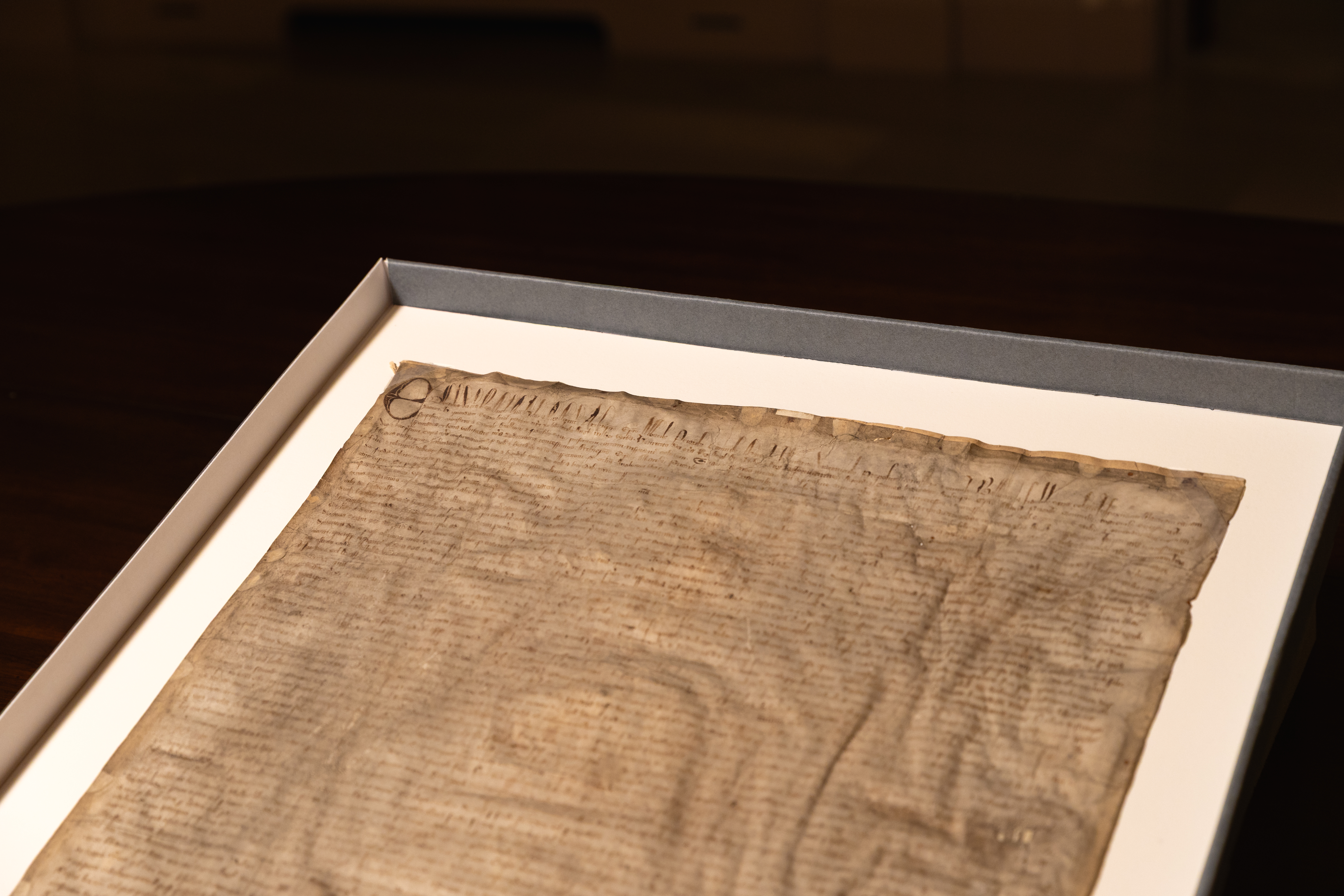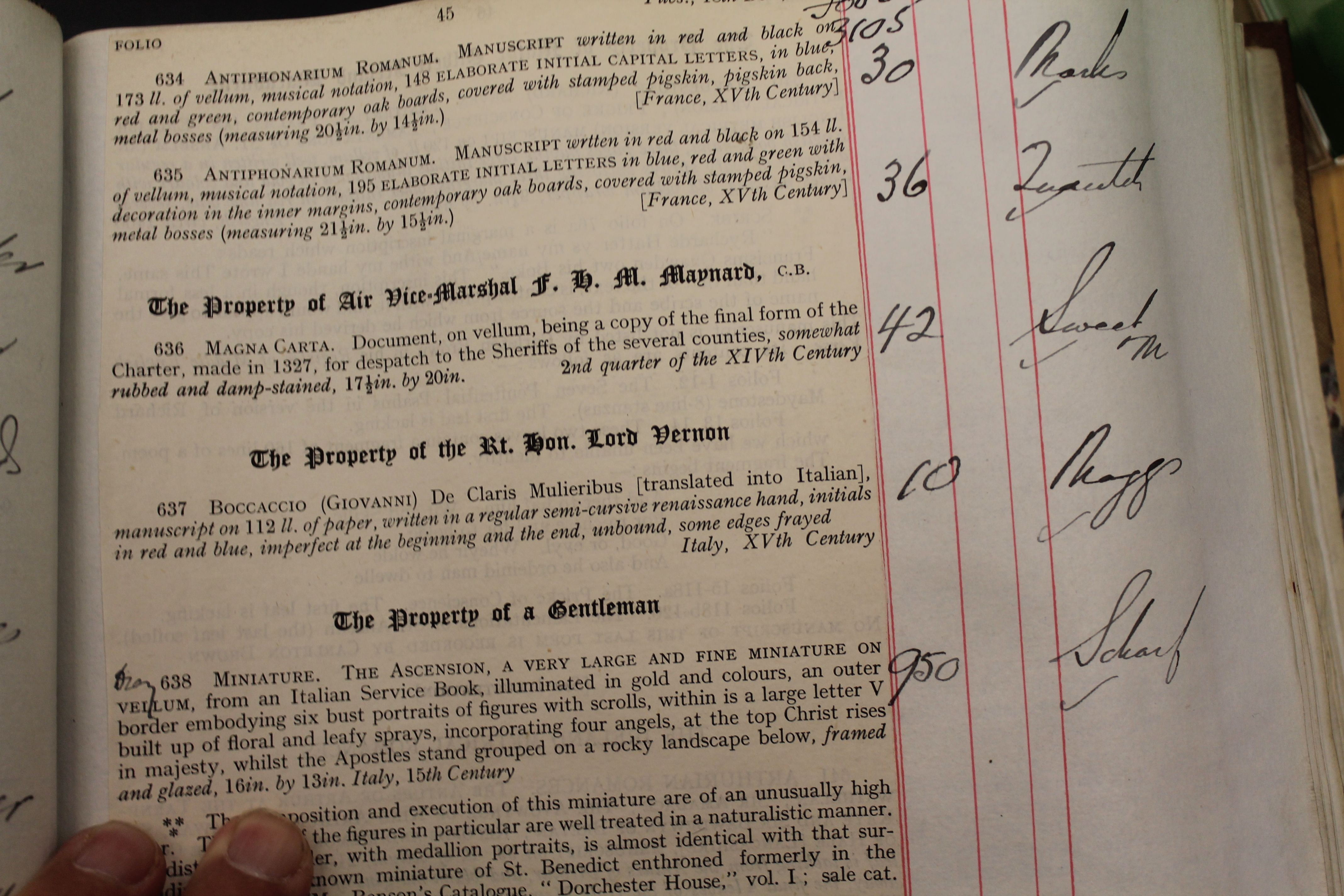Magna Carta ‘copy’ wrongly catalogued in 1940s found to be original
Tests were carried out on the Harvard Law School Library document and it was confirmed to be an original issue of the Magna Carta from 1300.

An original issue of the Magna Carta, which auctioneers mistakenly catalogued as a copy in the 1940s and sold for a “fairly derisory price”, has been identified.
Harvard Law School Library in America bought the document from a London book dealers in 1946 for 27 dollars and 50 cents before it was known that it was an original.
By contrast, a Magna Carta that was sold at auction in 2007 fetched more than 21 million dollars – around £10 million at the time – at Sotheby’s in New York.
A British university professor who was studying unofficial copies of the Magna Carta online looked at the digitised version of the document on Harvard’s website and realised it might be an original.

Tests were carried out, including a detailed comparison of text, and it was confirmed to be an original issue of the Magna Carta from 1300 under King Edward I.
David Carpenter, professor of medieval history at King’s College London, who spotted the document online, said it was a “fantastic discovery”.
“Harvard’s Magna Carta deserves celebration, not as some mere copy, stained and faded, but as an original of one of the most significant documents in world constitutional history, a cornerstone of freedoms past, present and yet to be won,” he said.
Prof Carpenter teamed up with fellow Magna Carta expert Nicholas Vincent, professor of medieval history at the University of East Anglia, to investigate the provenance of the document.
Prof Vincent said Harvard’s Magna Carta is the 25th known surviving Magna Carta original.
“The comparison I would draw is the rarest painter known to everybody is Vermeer,” said Prof Vincent.
“There are I think, it’s disputed, there are over 30 Vermeer paintings in existence and yet he is seen as the rarest painter in history.
“There are only now 25 of these Magna Carta originals.
“It is an extraordinary thing for anyone to possess.”
The Magna Carta is the royal charter of rights agreed in 1215 under King John.
It was the first document to confirm the rights of ordinary people under common law.
The first issue was repudiated by King John after around six weeks, and after his death it was reissued in three versions by his son Henry III, with the last of them in 1225, Prof Vincent said.

“That became the definitive text of Magna Carta,” he said.
“Then afterwards, whenever in the 13th Century there was a dispute between the king and the nation, kings reissued Magna Carta on at least three occasions after 1225.
“And this one (Harvard’s Magna Carta), the 1300 issue, is the last time it was issued as a single sheet document under the king’s seal as an official endorsement of the settlement of Magna Carta.”
He said that, including Harvard’s, there are seven known originals of the 1300 version that survive.
“Every county of England would originally have had a Magna Carta of each of those issues,” Prof Vincent said.
The Harvard Magna Carta is thought to have been issued to the former parliamentary borough of Appleby in Westmorland, England.
The Harvard Law School Library bought it in 1946 for 27 dollars and 50 cents, according to the library’s accession register.
Harvard Law School bought it from London book dealers Sweet & Maxwell.
The book dealers had bought it at a Sotheby’s auction in London a month or so earlier from First World War flying ace Air Vice-Marshal Forster “Sammy” Maynard for £42.
The Sotheby’s auction catalogue described the manuscript as a “copy…made in 1327…somewhat rubbed and damp-stained”.
Maynard had inherited it in archives from leading abolitionists in the anti-slavery campaign Thomas and John Clarkson.
Asked how it may have been mistaken for a copy, Prof Vincent said: “I think everyone was knackered at the end of the Second World War.
“I think whoever read it at Sotheby’s and looked at it, I suspect what they thought was ‘oh it can’t be an original Magna Carta because we’d know about it’.
“They misread the date, they got the wrong king.
“They catalogued it as if it was a charter of Edward III.
“But in fact it’s Edward I.
“For an amateur that’s a fairly easy mistake to make.
“But, as a result, the fact that it was an original was completely ignored and it went for a fairly derisory price.”
He said he hoped Harvard would “put it on display” and “make a great deal of it”.
Amanda Watson, of Harvard Law School, congratulated the two professors on the “fantastic discovery” and said: “This work exemplifies what happens when magnificent collections, like Harvard Law Library’s, are opened to brilliant scholars.”





